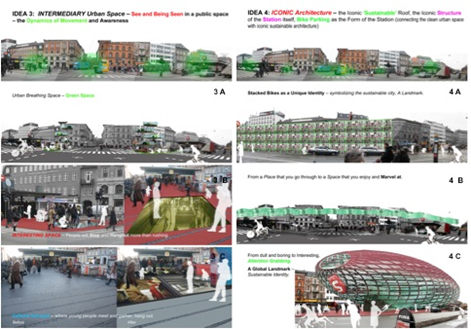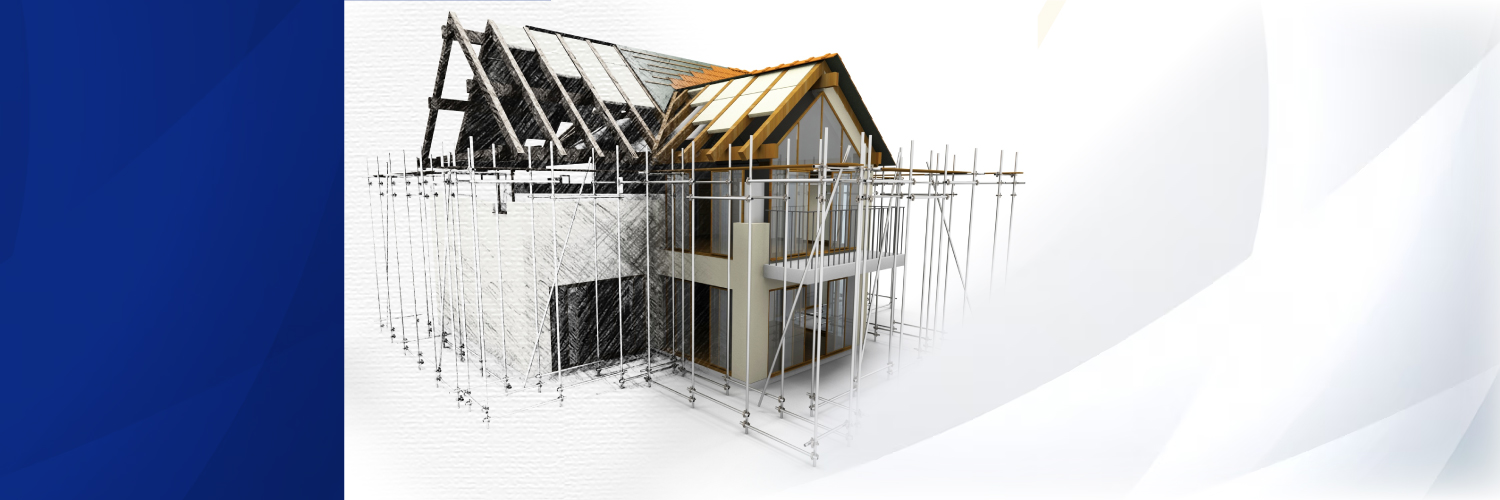Abstract
In this part work‐in‐progress and part position paper, we report our initial explorations of stating ‘critical encounters’ in exploring the in‐between space left by the two worlds – design and everyday experience. We seek to bring forward the foundational insights about the dialectic relationship between various dualities: design space versus lived place, geometric space versus concrete experiences, design world versus experience world. In this paper we specifically explore the relationship between perception and experience and the role of articulation of space in this everyday process. And we do this by go staging some critical encounters and reading in between the lines of the participants’ reactions to these encounters.
Prologue
Some weeks before:
The architects: “What’s the first thing that comes to you of Norreport (a busy metro station in Copenhagen)?”
The participants: “Well, it smells – of hot dogs, stale beer, and urine”, “its ‘crowdy’ and lot of bikes around”. “It is cold” (not the ‘aesthetic’ quality, but the memory of being cold while waiting for a bus at night. “It’s the meeting place for us, but we meet there to go someplace else…”
Even before:
“Norreport – More than just a station” (from the call for competition to redesign the Norreport station, City of Copenhagen 2009)
“Almost retro in its lines, the architects’ vision of the new station is composed of a series of rounded, floating roofs set upon striking glass pavilions” (text from ‘Inhabitat’ website describing the winning design for Norreport by COBE architects)
There is an inherent gap in the ways we designers talk about a space and the way people, who are not trained in the language of formal design, talk about it. We believe in exploring this gap, reading between the lines, to understand the relationship between spatial articulation and everyday experience. Further we expand this simple observation and say that there are two worlds: the designers’ world and the everyday ‘lived’ world. From this construct we can move into other interrelated dualities: notions of space versus place, and geometric space versus concrete experience. The latter is of course the topic of the current call and we take this opportunity to explore the other mentioned dualities. But we are also interested in transcending these supposed boundaries, interested in exploring the in-between through staging what we call as ‘encounters’ between the two worlds. We believe this will highlight the ‘entangled’ nature of the relationship between the above-mentioned dualities along with questioning the inherent assumptions of what is architecture specifically, and design in general, and where does the process of design end.
We present a part work-in-progress, which seeks to deconstructs what the participants say about space and experience, and a part position paper which seeks to constructively support this deconstruction with readings from phenomenology and other texts. We argue that the emerging understanding through these encounters will contribute to the ongoing discussions and bring forward the dialectic and inter- related nature of these dualities. First, we discuss the setting of the encounters we staged and in the next section build up the implications of the encounters, through the deconstruction of the participants’ statements with supporting understandings from Merleau-Ponty’s phenomenology of perception. We then summarize these implications in the light of the ongoing discussions, highlighting the role of critical encounters in transcending the boundaries between design and experience.
The setting and staging the encounters

While the notion of staging encounters is used within co-design and participatory design traditions rooted in Scandinavia, we are exploring this from a ‘critical’ viewpoint. Inspired by the explorations of Symbiots (Bergstrom et al, 2009) we stage critical encounters with people, to explore the in-between space of the design world and the everyday world. The root inspiration here is the notion of critical design as forwarded by Anthony Dunne and Fiona Raby (Dunne & Raby, 2001), where, critical design uses speculative design proposals to challenge narrow assumptions; preconceptions and givens about the role products play in everyday life.
The setting is the busiest station in Copenhagen, Norreport station. It is a transit hub with the S trains, Metro, regional trains and the bus terminus. (See image1). We used our skills as architects to ‘redesign’ the space, throwing up a set of 12 options.

The four ideas with three options each
These options were articulated in the forms of photomontages, using the common rhetoric of an architectural presentation. But we left many things unsaid, especially, the messiness of the current every day, which the common architectural rendering manages to evade. We then took them to various people (6 in the first set of explorations) and took them through the process of first recounting their current and past experiences of Nor report, what it means to them, etc. Then we posed that we are ‘redesigning’ the space, and presented the options for further comments. After their initial reactions, we asked them to imagine the redesigned space after they get ‘familiar’ with it. We present below some implications of these encounters.
Implications
In this section we highlight inter-related aspects of space, perception, and engagement; attempting to answer the following broad questions: Firstly, how do we perceive space in our everyday lives? Secondly, what role does geometric or other articulations of space play in contributing to this perception and everyday experience in general? And finally, how does such architectural articulations of space engage us, can it move us from being in a position of mere consumers to more engaged participants?
Perceiving space as fragments
The first set of deconstructions of responses hint towards an understanding that we perceive space in fragments and pretty much don’t have a ‘holistic view’, as we go about our everyday lives. For instance, consider this statement, “I just know that I have reached the place (Norreport station) but can’t really pinpoint the structure. I am not able to remember where exactly the Norreport sign (see image) is located, but just know that it is there somewhere”. In talking about how he knows that he is in Norreport station, the participant actually hints at the fragmented vision of the space he has, even though he visits the station at least once a week for the past one-year. All the participants had problems in talking about and describing in totality the space of the station, almost always referring to fragmented bits – the smells, the color or the particular patterns of lights and signs (refer to the opening dialogue in Prologue).
We believe this can be ‘explained’ by the phenomenological understanding of perception: that our senses are actively seeking familiar patterns and this is an acquired skill. Merleau-Ponty, a French phenomenologist in his major work, “The phenomenology of perception” (Merleau-Ponty, 1962) lays out the fundamental understanding that, perception requires action, is embodied and is an acquired skill. As we move about in the space, going about our everyday activities, we perceive only that part of the space that makes sense to us, and this happens without any conscious thought. It is only on reflection that one can pluck out the details and even then not be able to talk about the space in its totality as above.
Another interesting reaction was for the screens on the floor, by a participant who was a documentary movie editor, “I love them (the screens). I always have to look at them… running images… I just have to look at them.” Here again his eyes were trained to look for the familiar patterns of moving images in video and were drawn towards them.
Abstract movement and Concrete movement: First impression and everyday experience
Another set of responses highlights the role of geometric articulation of space in perception, bringing forward the difference between being in a space for the first time and going about one’s activities when the space is familiar. As mentioned in the call, there has been an inherent lack of discourse within the emergent area of architecture exploring various possibilities of geometric forms, about the role it has on everyday human perception and experience. The responses hint towards the understanding that a unique geometry gains one’s attention as long as it is a ‘new’ experience, the first encounter, but as one gets familiar with the space, we are adept in moving from bringing the space in forefront of our perception field and pushing it in background.
For instance, when first encountered with the formal ideas for Norreport, the respondents were quite enthusiastic and shared the positive vision of the architects,
“When you see it for the first time, it will be of course great… wow! Really modern and nice and…”
“It doesn’t look like traffic… like going from A to B… it looks like you can spend some time there… only if there are shops, grab a coffee…”
“It is more dynamic… it kind of gives a dynamic impression the form, the way it is shaped…”
“Which is a distinctive, it looks like a station… one object like this, and it will look like a super modern station. I wouldn’t be surprised finding a station like this shape…”
“It is more like an exhibition center or museum, with tourists coming here… something that you appreciate from architecture POV… I feel it’s a beautiful place to put paintings…”
But when asked to imagine about going there every day to change trains, the responses were,
(Looking at the bikes lying around and people cluttering the image) “I can imagine it can be annoying with the tourists in due course of time…”
“I don’t know if it does…the association with the station is improved or gets worse. When you always have to wait for the bus, and it is always late… I don’t know, you hate this place even more…” What
comes out here is how the participant imagines almost implicitly, how the late arrival of the bus can trigger she putting the station structure in foreground and cursing it. And the notion that she might be more frustrated because of the contrasting image of being ‘modern’, the structure portrays.
“I might get a bit sick about it… But it doesn’t have to be only a station, it can utilize with maybe on top floor… a restaurant or shopping or whatever… create a place near the city center … could become a meeting place where you would like to go.” Here again, we can notice that the stress is more on the kind of activities a space enables than the structure itself.
Again, we resort to Merleau-Ponty’s notion that embodied human experience is of two stages: the abstract movement and the concrete movement. The abstract movement is made on ‘purpose’, a person moving in a space for the first time, not sure where to go for instance. The concrete movement is ‘natural’, without any conscious thought and is part of the response to the situation. As the situation of the late bus implies, people actually move from the abstract movements to concrete and back – a transition between various degrees of foreground-background relationship with the space, triggered by being in the situation.
When talking about further visiting the ‘blob’ station (Option 4C – see figure 3) after 4 months, one participant said that, “if you see it from time to time, I think you still like it and it is nice to see it again. Every time I see it I think it is wow, really something…” We can notice the usage of the word ‘look’ and ‘see’, which implies getting into the relationship of looking at an object (the structure of the station) than experiencing it in everyday life. It is similar to the relationship when we visit architectural marvels – right from the Great Pyramids to the Guggenheim Museum in Bilbao. From here we can move to the third aspect, that of engaging spaces.
Articulation of space and its role in engagement (as opposed to consumption)
In this section we discuss aspects of the encounters highlighting the notions of engagement, specifically, if articulation of space contributes to what forms of engagement. We build on the previous understanding that we are adept at transiting from abstract perception to a more embodied or concrete perception and back, and highlight how various articulations of space can only contribute to making these transitions smoother or drastic. We take our starting point, the debate of ‘architecture reclaiming lost ground to digital media’ (Murphy 2006, while discussing the Seattle Central Library by Rem Koolhaas). And we explore the role of both – spatial articulation and digital media in the two options.
Talking about the option of the digital screens on the floor, “I like these screens, they can change, and every day you can see something different…” When asked if she has noticed the existing screens near the central square, “I never notice that they change, I mean I never look at them (screen)… there is the Politiken (Political Magazine) and…I sometimes look at them when I’m bored… they also have them in Vienna… here it is in Danish, but in Vienna I used to look at the news.” Then talking about these screens and comparing it to the LED thermometer near the Radhuspladsen in Copenhagen (see image), the participant said, “I don’t remember any particular stuff from digital screens… but I see this thermometer everyday… it is kind of fun as I bike by, I see what temperature it is”
Option 3C, digital screens on the floor3C, digital screens on the floor
Firstly, the stress on ‘look’ is again apparent here, thereby brining the role of perception in engagement forward. As discussed above, we seamlessly transit between the two modes of perception: direct, conscious perception and embodied, concrete perception. This we believe challenges the implicit assumption in Murphy’s text (and also common architectural rhetoric), that articulations of space can engage people continuously, as symbolized by the so-called media space scenarios. The articulations of space and the digital technological artifacts contribute to the degrees of gracefulness through which we manage the perceptual transitions: they can either make it jarring, the first reactions (detailed below in the Sub-Plot section) of the participant to the Seattle Library images, for instance. Or they can make it more graceful, the way the participant manages to read the LED thermometer even while negotiating the busy traffic signal while biking. Hence engagement as perception is a relational quality, dependent on the embodied being in the world, as much as on the design articulations.
Subplot
An interesting sub-plot came up during our discussions on the option 3B. As the participant was enthusiastic about the ability to see down and see the people boarding trains, she was shown the images of Seattle Central Library. She said, “No… that would be horrible… I would really hate it if somebody sees me reading…it is wow… but I don’t know if I would go there to read…when I am reading and I have a book… I have to some… it is kind of very private… it’s not something you share…sitting in the park and reading is different, but this is a library… when I go into a library it is something different…I want to be surrounded by books.
This reaction is what we believe Koolhaas would have expected. In arranging the spatial programs in a way ‘new’ to the everyday familiarity of the libraries, the design, at least, for the first time one is there to read doesn’t allow much space for people to move away from abstract, conscious engagement. But we would like to explore what happens when the spatial arrangement becomes familiar, a part of everyday life.
Reflections
We began with highlighting the two worlds: the design world, with its dedication to geometric and programmatic articulation of space, and the everyday world, with people experiencing the being in the space as they go about their everyday activities – the concrete world. Through staging various encounters of critical nature, we explored the in-between areas of these worlds. Reading between the lines of the participants’ reactions and supporting them with foundational philosophy of perception and experience, we challenged some assumptions of the design world. Specifically, that perception is the more fundamental aspect to experience and that human being’s transit between two modes of perceptions.
What we did, and want to pursue further, is an attempt at transcending these two worlds. We believe that staging such encounters with the people in the everyday world is one of the ways to transcend these worlds. Within these explorations, there was subtle overlapping also, as depicted by retaining the messiness of the images. These inherent contradictions between the architect-speak and the images threw up some interesting insights, of being flooded with future tourists, for instance. We also demonstrated, though as initial explorations, that critical encounters bring forward fundamental and hidden insights about the relationship between articulations of space, experience and the everyday situation, challenging commonly held assumptions about this relation in the design world. This we believe contributes to the larger ongoing discussion about the nature of design and design process. Specifically, our explorations seek to contribute to the increasing voices asking, “Where does design end and experience begin?”; and to broaden the conception of design.
Future work
We are currently looking for funding possibilities in various forms, to further explore this in-between space. In the future we would like to move from the current image-based encounters to other forms: ranging from video and digital installations, to spatial installations.
Epilogue
“Oh! Thank God! I couldn’t imagine being in this cage… feels very uncomfortable…” A participant’s sigh of relief when told that the option 2B is (in fact, none of the options are) not going to be built.

Ar. Archana Yadav, Associate Professor, ANRVSA
MA, Domus Academy, University of Wales
I believe in creating a Sense of Place through architecture & design/Role of Design and Designer in interactions between critical design, people and their everyday practices.





























